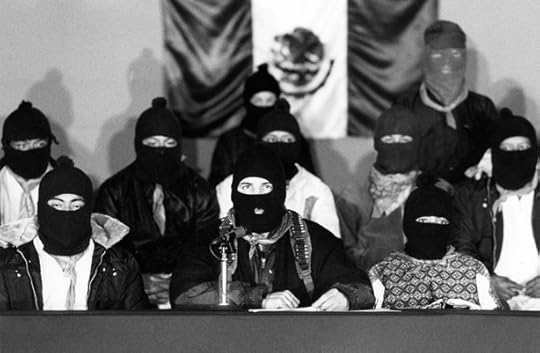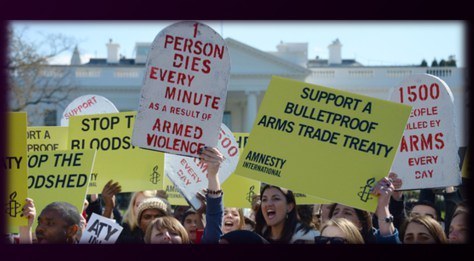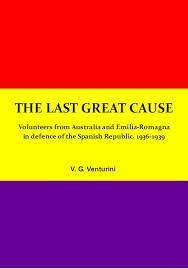Stuart Jeanne Bramhall's Blog: The Most Revolutionary Act , page 1309
January 6, 2016
Close-Up With Syrian Refugees on Lesbos (22.36)
The Island of All Together
Directed by Philip Brink and Marieke van der Velden (2015)
Film Review
I was strangely moved by this documentary of European tourists and Syrian refugees interviewing each other on the Greek island of Lesbos. The latter is a common destination for refugees who cross the Mediterranean from Turkey.
I was genuinely surprised by the high educational level of the refugees. All were professionals (lawyers, teachers, mechanical engineers) or skilled trades people (carpenter, cosmeticians) in Syria. It’s no wonder Germany is so eager to accept them.
The postscript to the film indicates that most of the pairs reunited once the refugees reached their destination, with most of the Europeans actively assisting their refugee with adapting to their new life.


January 5, 2016
We are opting our first grade son out of the MAP test—here’s our letter explaining why
*
*
Very important information for all parents and grandparents of school-age children.

The infamous MAP test is set to be administered in my son’s school this week. The MAP test is a computerized test meant to measure students in math and reading. Seattle Public Schools initially required MAP kindergarten through high school, with multiple testing periods per year. In 2013, Garfield High School launched a boycott of the MAP test and numerous schools joined in refusing to administer the test. By the end of the year the district announced that it would no longer requiring the MAP test at the high school level. Since then, the increasing pressure of the opt out movement and scrutiny on the role of high stakes testing in our education system have continued to reduce the use of the MAP test in the Seattle Public Schools.
 The opt out movement has pointed out that the MAP test consumes too much class time, monopolizes computers and shuts…
The opt out movement has pointed out that the MAP test consumes too much class time, monopolizes computers and shuts…
View original post 448 more words


January 4, 2016
Support Grows for Unconditional Basic Income
Money for Free
VPRO Backlight (2015)
Film Review
Money for Free is about Unconditional Basic Income (aka Universal Basic Income), a form of social security system in which all residents of a country, city or region receive an unconditional sum of money in addition to any other income they receive.
The documentary profiles Michael Bohmeyer, a German web developer who crowd funded a UBI (German residents can apply for it through his website), New York venture capitalist Albert Wenger (who helped fund Bohmeyer’s UBI), and British economist Guy Standing. Standing has conducted UBI experiments in India and Namibia.
All three see a strong need for UBI in a globally economy that is rapidly shedding jobs and leaving millions of young people permanently unemployed.
At present Bohmeyer has raised 12,000 euros, which means eight people (chosen by lottery) receive his UBI.
Most opponents of UBI claim it will destroy people’s motivation to work. Standing’s experiments in India and Namibia show just the opposite. People who received a UBI in his pilot program increased their economic activity and eared income (as a result of improved nutrition and health).
The filmmakers also interview Alaska residents who receive a guaranteed income from a resource tax on the state’s oil industry.
France, Netherlands and Finland all have basic income pilot schemes in the pipeline. Switzerland will hold a referendum on UBI later this year.
They will also hold a referendum on whether to prohibit private banks from creating money to prohibit private banks from creating money


January 3, 2016
London 2016…Seeds Of Resistance
*
*
An update on self-organized resistance and collective anarchism in London.
“London 2016: the terrain of struggle in our city” – Aylesbury Estate and some seeds of resistance
– January 1st, 2016

By Some London Foxes. This is a small contribution towards mapping the terrain of social conflict in London today.
First, it identifies some big themes in how London is being reshaped, looking at: London’s key role as a “global hub” for international finance capital; how this feeds into patterns of power and development in the city; and the effect on the ground in terms of two kinds of “social cleansing” – cleaning out undesirable people, and sanitising the social environment that remains.
Second, it surveys recent resistance and rebellion to this pattern of control including the short-lived “grassroots housing movement” of last winter, the confrontational Aylesbury Estateoccupation, anti-raids mini-riots, and some riotous street parties.
View original post 1,245 more words


January 2, 2016
Celebrating 22 Years of Zapatismo
One of the most successful examples of collective anarchism – from Mexico.
The anniversary of the EZLN’s uprising is a chance to reflect on the Zapatista movement’s achievements and lessons that are still relevant today.
By Hilary Klein
Jan. 1 marks the 22nd anniversary of the Zapatista uprising and more than 30 years since the formation of the Ejército Zapatista de Liberación Nacional (Zapatista Army of National Liberation, EZLN). On January 1, 1994, the EZLN captured the world’s imagination when it rose up to demand justice and democracy for the indigenous peasants of southern Mexico. Since that brief armed insurrection, the EZLN has become known more for its peaceful mobilizations, dialogue with civil society, and structures of political, economic, and cultural autonomy. Over the past three decades, the Zapatista movement has won significant changes in its own territory and has inspired other social movements in Mexico and around the world, offering a number of key lessons that are still relevant today.
On January 1, 1994, the EZLN captured the world’s imagination when it rose up to demand justice and democracy for the indigenous peasants of southern Mexico. Since that brief armed insurrection, the EZLN has become known more for its peaceful mobilizations, dialogue with civil society, and structures of political, economic, and cultural autonomy. Over the past three decades, the Zapatista movement has won significant changes in its own territory and has inspired other social movements in Mexico and around the world, offering a number of key lessons that are still relevant today. The date of the Zapatista uprising was chosen for its symbolic importance – as it was the day the North American Free Trade Agreement (NAFTA) went into effect. The EZLN was one of the first popular movements to recognize neoliberalism as a menacing new stage of global capitalism and called NAFTA a death sentence for the indigenous peasants of Mexico.
The date of the Zapatista uprising was chosen for its symbolic importance – as it was the day the North American Free Trade Agreement (NAFTA) went into effect. The EZLN was one of the first popular movements to recognize neoliberalism as a menacing new stage of global capitalism and called NAFTA a death sentence for the indigenous peasants of Mexico.
As night fell on Dec. 31, 1993, the armed forces of the EZLN had begun to gather. It was an army made up almost entirely of indigenous people, and about a third of the soldiers were women. As dawn broke on New Year’s Day, Zapatista troops occupied seven towns throughout the eastern half of Chiapas, including San Cristóbal de las Casas, a quaint colonial city nestled in the misty highlands of Chiapas and a major tourist destination. The Zapatistas occupied San Cristóbal for less than 48 hours. They stayed long enough to read their declaration of war from the balcony of the municipal palace, but slipped away in time to escape the full brunt of the Mexican military. The uprising would quickly transform the EZLN into one of the most well-known social movements in the world, and one that would inspire an extraordinary level of solidarity. Over the past two decades, the impact of the Zapatista movement can be seen at the local, national, and international level. Land takeovers carried out after the 1994 uprising — where large ranches were occupied by the Zapatistas and reapportioned to landless peasants — impacted the distribution of wealth in Chiapas and continue to affect living conditions for Zapatista villages farming on reclaimed land.
Over the past two decades, the impact of the Zapatista movement can be seen at the local, national, and international level. Land takeovers carried out after the 1994 uprising — where large ranches were occupied by the Zapatistas and reapportioned to landless peasants — impacted the distribution of wealth in Chiapas and continue to affect living conditions for Zapatista villages farming on reclaimed land. The Zapatista structures of indigenous autonomy have meant that rural villages in Chiapas have gained access to rudimentary health care and education. They exercise self-determination through local and regional governments, and generate resources back into their communities through economic cooperatives that organize the production of goods.
The Zapatista structures of indigenous autonomy have meant that rural villages in Chiapas have gained access to rudimentary health care and education. They exercise self-determination through local and regional governments, and generate resources back into their communities through economic cooperatives that organize the production of goods. At the national level, the EZLN and the Mexican government signed the San Andrés Peace Accords in 1996. Although never implemented by the Mexican government, the San Andrés Accords recognized indigenous rights, promised indigenous autonomy, and created a framework that the Zapatistas and other indigenous groups throughout Mexico would implement on their own.
At the national level, the EZLN and the Mexican government signed the San Andrés Peace Accords in 1996. Although never implemented by the Mexican government, the San Andrés Accords recognized indigenous rights, promised indigenous autonomy, and created a framework that the Zapatistas and other indigenous groups throughout Mexico would implement on their own. The Zapatista movement arguably helped bring an end to 70 years of one-party rule in Mexico when the Partido Revolucionario Institucional (Institutional Revolutionary Party, PRI) lost the presidential elections in 2000. The EZLN continues to be an important reference point for social movements in Mexico today, such as the protest movement that emerged after the disappearance of forty-three students from a rural teachers’ college in 2014.
The Zapatista movement arguably helped bring an end to 70 years of one-party rule in Mexico when the Partido Revolucionario Institucional (Institutional Revolutionary Party, PRI) lost the presidential elections in 2000. The EZLN continues to be an important reference point for social movements in Mexico today, such as the protest movement that emerged after the disappearance of forty-three students from a rural teachers’ college in 2014.
Around the world, the Zapatistas catalyzed a wave of solidarity that inspired a generation of young activists to organize for social justice in their own contexts. International gatherings organized by the EZLN fostered the burgeoning global justice movement. Events inspired or influenced by the Zapatistas include the World Social Forum, an annual global forum for grassroots activists and organizations, and demonstrations against global capitalism, such as the 1999 protests in Seattle against the World Trade Organization. With its ideological critique of neoliberalism and its internal emphasis on participatory democracy, the EZLN was a precursor to the Occupy and “We Are the 99 Percent” movements that emerged almost two decades after the Zapatista uprising. The Zapatista movement also offers a viable example of local alternatives to global capitalism. The economic cooperatives in Zapatista communities, for example, are strengthening a local and regional economy based on collective effort and the well being of the community, rather than competition and profit.
Anyone who is 21 years old or younger was born after the Zapatista uprising, and many young people today have not even heard of the EZLN. In addition to understanding the significant achievements in Zapatista territory and their ripple effect around the world, this anniversary is also an opportunity to reflect on the qualities of the Zapatista movement that made it such a compelling and successful social movement.
One such quality is the EZLN’s remarkable ability to draw from different historical, political and cultural traditions. The founding members of the EZLN were Marxist guerrillas who sought to overthrow the Mexican government through armed struggle. In Chiapas, however, they encountered a centuries-long history of indigenous resistance and a well-organized peasant movement fighting for land reform. They also encountered the influence of the Catholic Diocese of San Cristóbal and several Maoist organizations. Instead of holding onto a rigid ideological orientation, the EZLN’s leadership in those early years learned from these different traditions and began weaving them into a political praxis we now know as Zapatismo. This fluidity can also be seen in the blending of indigenous traditions and Western knowledge within the structures of indigenous autonomy. The autonomous health care system, for example, integrates knowledge of medicinal plants and includes traditional healers like midwives and bone-setters, but also makes use of Western medicine and relies on doctors to train the community health promoters.
Another important element of the Zapatista movement is women’s leadership and the commitment to women’s rights and equality. Women’s involvement in the EZLN has helped shape the Zapatista movement, which, in turn, opened new spaces for women and led to dramatic changes in their lives. When the EZLN began organizing in the rural villages of Chiapas, women there were experiencing an extraordinary level of violence and discrimination. But gender roles were radically redefined in the context of the Zapatista movement, as women became guerrilla insurgents and political leaders, healers and educators, and members of economic cooperatives. The tremendous changes in women’s lives include public roles of leadership and participation in community affairs, the ability to choose their romantic partner and decide how many children to have, and a significant decrease in alcohol consumption and domestic violence. The great strides made towards women’s liberation within the Zapatista movement offer an array of insights about how gender transformations can be achieved.
The final quality of the Zapatista movement that I would like to point to is a poignant combination of humility and passion. The Zapatistas are humble enough to know that none of us have all the answers. “Caminando preguntamos,” they say – “walking we ask questions.” In spite of all they have gained, they readily acknowledge that theirs is a long-term struggle. They want to live in a world of justice and dignity and are working on building it, step by step. A Zapatista elder named Eva once told me, “The path of this struggle is long and there is still much we want to accomplish. We don’t know how long it will take. There are many things we will probably not achieve ourselves. It will be up to our grandchildren, our great-grandchildren, and our great-great-grandchildren.”
None of this, however, has stopped the Zapatistas from dreaming big dreams or taking on the most intimidating of foes. They had the courage to declare war on the Mexican government, to take on global capitalism, and to ask themselves what it would mean to dismantle patriarchy in Zapatista territory. If there is one thing about the Zapatista movement I would hope to see contemporary social movements emulate, it would be this combination of humility and chutzpah – the understanding of the enduring nature of this work and the patience and unflinching commitment that comes along with it. The arrival of the Zapatista caravan at the Zocalo in Mexico City, March 11, 2001, unarmed, surrounded by a chain of civilians to protect them from the day they left Chiapas
The arrival of the Zapatista caravan at the Zocalo in Mexico City, March 11, 2001, unarmed, surrounded by a chain of civilians to protect them from the day they left Chiapas
Share this:
Source: Celebrating 22 Years of Zapatismo


January 1, 2016
Collective Anarchism: Alive and Well in Virginia
Roses on my Table
Ethan Silverstein (2011)
Film Review
“I’d rather have roses at my table than diamonds on my neck.” Emma Goldman
Roses on My Table is a short documentary about daily life in a Richmond Virginia anarchist collective called Wingnut. It was produced in response to a statement by Virginia State Senate Majority Leader Tommy Norment describing Wingnut residents as “armed and dangerous terrorists.” It attempts to correct common misconceptions about what anarchists believe and how they seek to accomplish their political objectives.
Wingnut first formed in 2009 when one of their members purchased a condemned home and enlisted a group of anarchist friends to live there and make it fit for human habitation.
Like other anarchists, Wingnut residents believe society would be better off without a state and arbitrary coercive authority. Their anti-government, anti-police and anti-prison views are well received in their mostly minority neighborhood. In part, this relates to the community services they offer. The house is open to the public twice a week with free Internet access and meeting space to discuss neighborhood concerns. In addition to providing kitchen space for the Richmond chapter of Food Not Bombs (a national group dedicated to feeding the homeless), Wingnut also performs a once a week neighborhood cleanup.
The group collectively makes all decisions about the house and the political activities they undertake. When neighbors ask how they seek to bring about political change, they assert it’s not up to them, that autonomous groups of people need to decide “how life should be.”
Two specific Wingnut actions the film depicts are the March 18, 2011 occupation of a neighborhood park to stop the city from selling it to developers and a citywide clean-up of fallen trees and other storm damage following Hurricane Irene in August 2011. As part of the occupation of Monroe Park, the collective helped set up a homeless community for park residents, as well as collecting food and starting a free market This was six months before the formation of Occupy Wall Street in Zuccotti Park.
Towards the end of the film, a homeless person involved in the occupation neatly sums up Wingnut’s vision and purpose: “If society collapses people won’t be able to survive on their own – human society has always operated collectively. Society works better by helping people out.”


December 31, 2015
Collective Anarchism: Alive and Well in Rome
Radical Rome
Media-Lien (2015)
Film Review
Radical Rome is a short French documentary about Rome’s anarchist anti-austerity movement.
The film focuses mainly on private property the group has reclaimed as public space. One self-governing public space called ESC (Excel, Subtract, Create) has been occupied by activists for over 30 years and boasts a tea room, bike shop, cinema, theater, community kitchen, school for migrants and a sewing factory run by migrants. ESC is non-hierarchical and governs itself via weekly assemblies.
At present, Rome’s youth unemployment rate is 44%. Its anti-austerity movement is mainly driven by students, unemployed youth and older activists over 40.


December 30, 2015
Iran MPs introduce US compensation bill
*
*
Iran’s lawmakers have just introduced an urgent bill, demanding compensation from the US for damages which it has inflicted on their country since 1953. At the top of the list, the bill demands restitution from the US over loss of lives and property damage resulting from the CIA-led 1953 coup which toppled the government of Mohammad Mosaddeq and restored the shah as an absolute dictator.
 Finding Truth In an Illusory World
Finding Truth In an Illusory World
SOURCE
Mon Dec 28, 2015 10:14AM

A view of Iran’s Majlis in session. ©Mehr
Iran’s lawmakers introduce an urgent bill, demanding compensation from the US for “the damages which it has inflicted” on the country since 1953.
The MPs, irked by recent moves in the US for appropriation of Iran’s frozen assets, presented the bill Monday with a single urgency status, meaning it will be discussed immediately in parliament.
“In order to redeem the rights of the Iranian nation, the Administration is obliged to take necessary legal measures on receiving compensations and damages from the American government in proportion to its role in the following cases,” the draft bill said, listing the cases in 11 entries.
On top of the list, the bill demands restitution from the US over loss of lives and property damage resulting from the CIA-led 1953 coup which toppled the government of Mohammad Mosaddeq and restored the shah as an…
View original post 310 more words


December 29, 2015
Anarchism and the Spanish Civil War
The Last Great Cause
V.G. Tenturini
Search Foundation (2010)
Book Review
The Last Great Cause is a virtual encyclopedia of Spanish political history, starting from the Napoleon’s invasion in 1808. Although I was chiefly interested in the history of Spanish anarcho-syndicalism, the book also provides a comprehensive overview of the fascist coup Franco launched in 1936, the International Brigades who fought (unsuccessfully) to save the second Spanish Republic, the so-called “transition” following Franco’s death in 1975 and more recently efforts by the crusading Spanish jurist Baltasar Garzon to achieve justice for tens of thousands of victims of the Franco regime.
Venturini begins by identifying unique features of 19th century Spanish society that provided fertile ground for a major anarchist movement. Among these were Spain’s failure to achieve industrial revolution (except in Catalonia), the absence of a Spanish middle class and strong separatist movements in Catalonia and the Basque region of Spain. Unlike socialism, which historically develops among middle class intellectuals, Spanish anarchism had its origin in the working class.
The Rise of Spanish Anarchism
In 1868, a group of disconnected generals led the first major effort to depose the Spanish monarchy. The same year, Mikhail Bakunin, known as the father of collective anarchism, sent his disciple Giuseppe Fanelli to Spain to organize Spanish farm laborers. Within five years, the number of anarchists in Spain totaled 50,000.
The resulting “glorious revolution” produced in the First Republic. It lasted eleven months before the monarchy was restored.
Spanish history between 1902 and 1929 was marked by profound political and economic turmoil. During the early 1900s, Spanish anarchists merged with the Syndicalist* movement. In 1911, they formed the CNT.** CNT membership grew from 14,000 to 700,000 by 1919. In 1917, the CNT joined forces with the UGT*** to stage the first general strike.
In 1929, continuing popular unrest would lead to Alfonzo XIII’s removal from power and the creation of the Second Republic in 1931.
The Forces Backing Franco’s Coup
From the outset, the Republic faced powerful opposition from the Catholic Church, the Spanish military, wealthy landholders and Spanish and European Banks. Spain was embroiled in virtual civil war from 1933 on, as the forces of reaction engaged armed thugs (as the Falange Espanola) to thwart governmental efforts to carry out land and other democratic reforms.
These forces of reaction also assisted in planning and implementing the fascist coup Franco launched in 1936. The Republic was at a clear disadvantage in resisting the coup, owing to the major support Franco received from fascist Germany and Italy and the covert support he received from Britain and the US. According to Venturini, Britain, which had major business interests in Spain, directly aided Franco with intelligence and naval support. American oil companies also provided him with oil (while refusing to sell it to Spain’s legitimately elected government), and Ford and other US manufacturers supplied him with trucks.
The International Brigades
Venturini estimates 40,000-50,000 volunteers from 53 countries participated in the International brigades. When Franco captured Catalonia in January 1939 500,000 Republican soldiers and civilians fled across the border to France. Many of the anarchists joined the Maquis, where they played a vital role in liberating France from the Nazis.
Venturini emphasizes that no allied troops fought in the South of France – that these regions were liberated by the Resistance – in many instances before the liberation of Paris.
*Syndicalism is a type of economic system in which industries are owned and managed by the workers.
**CNT Confederación Nacional del Trabajo National Confederation of workers.
***The Unión General de Trabajadores (UGT, General Union of Workers) is a major Spanish trade union, historically affiliated with the Spanish Socialist Workers’ Party (PSOE).
****Rural guerrilla bands of French resistance fighters.


December 28, 2015
US arms criminals save Capitalism: Arms Sales Soar 35%
*
*
Phew. What a relief. The good and kind arms merchants protecting us from economic disaster.

 by Tyler Durden….. If ever there was a clearer indication of America’s “need for war” it was the latest Durable Goods orders data, which confirmed, absent defense spending, the US economy is in a tail-spin.
by Tyler Durden….. If ever there was a clearer indication of America’s “need for war” it was the latest Durable Goods orders data, which confirmed, absent defense spending, the US economy is in a tail-spin.  However, as NYTimes reports, foreign arms sales by the United States jumped by almost $10 billion in 2014, about 35 percent, even as the global weapons market remained flat and competition among suppliers increased, thanks to multibillion-dollar agreements with Qatar, Saudi Arabia and South Korea.
However, as NYTimes reports, foreign arms sales by the United States jumped by almost $10 billion in 2014, about 35 percent, even as the global weapons market remained flat and competition among suppliers increased, thanks to multibillion-dollar agreements with Qatar, Saudi Arabia and South Korea.
Defense Spending New Orders has soared 148% in the last 3 months… the biggest rise since 2007
But it is the US arms sales to foreigners that is really flourishing.Despite a stagnant international weapons market and increased competition among suppliers, American foreign weapons receipts rose from $26.7 billion to $36.2 billion last year. According to a new congressional report, as The NY Times reports…
View original post 2,886 more words


The Most Revolutionary Act
- Stuart Jeanne Bramhall's profile
- 11 followers







